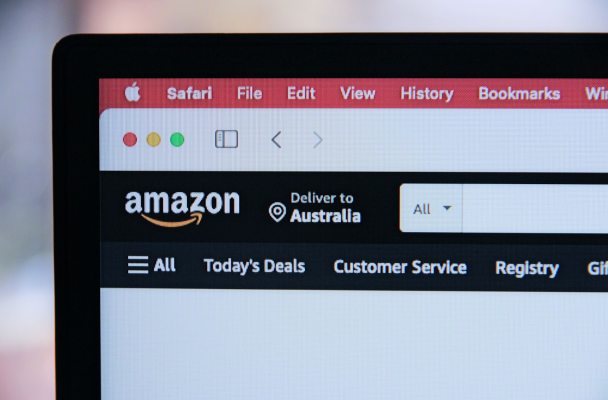As the digital marketplace continues to evolve and expand, understanding the intricacies of Amazon’s marketing strategy for 2023 is more critical than ever for businesses aiming to thrive in this fast-paced ecosystem. In this blog post, we will demystify some of the most frequently asked questions about Amazon’s current marketing approach, exploring critical elements like having a customer-centric attitude, features, growth opportunities, and how to analyze your results best to maximize your business’s visibility, sales, and success. Whether you’re an established seller or a newbie to the platform, this comprehensive guide provides practical insights to navigate Amazon’s complex yet rewarding terrain.
This FAQ was developed by eSpark, a full-service Amazon agency that empowers unique product-based brands to succeed in the leading online marketplaces, and friend of Ice Nine Online.
How should a business start creating a plan for its Amazon marketing strategy?
Creating a plan for an Amazon marketing strategy involves a detailed understanding of your business objectives, target audience, and the Amazon ecosystem. Initially, define your goals clearly. Are you aiming for brand awareness, increasing sales, or both? Based on these goals, identify your target audience and understand their purchasing behaviors and preferences.
The next step is to familiarize yourself with Amazon’s marketing services, including Sponsored Products, Sponsored Brands, and Amazon DSP (Demand Side Platform). Opt for the most suitable service based on your products, budget, and goals. Perform a competitive analysis to gain insights into successful strategies and potential gaps you can leverage.
Product optimization is crucial; ensure your product listings have high-quality images, accurate and detailed descriptions, and strategically placed keywords for better SEO. Pricing strategy also plays a significant role – offering competitive prices can help increase visibility in Amazon’s search algorithm. Finally, monitor your metrics regularly with Amazon’s analytics tools to adjust your strategy as needed and optimize your return on investment. Successful Amazon marketing requires regular review and adjustments to stay relevant and effective.

What team members will you need to market on Amazon effectively?
Successfully marketing on Amazon requires a skilled and diverse team. First, you’ll need an Amazon Account Manager who oversees the strategy, coordinates with Amazon, and understands the platform’s dynamics. Product Managers are crucial in handling individual products, optimizing listings, and monitoring stock levels.
A Content Writer or SEO Specialist is necessary to craft compelling product descriptions and optimize content for Amazon’s search algorithms. At the same time, a Photographer or Graphic Designer will create high-quality product images and promotional materials that meet Amazon’s standards.
A Data Analyst will monitor key performance indicators (KPIs), analyze data, and provide actionable insights to improve the strategy. To handle sponsored ads, you will need a Digital Marketing Specialist who understands Amazon’s advertising platform and can create and manage effective ad campaigns.
Lastly, depending on the size and scope of your business, a Customer Service Representative may be needed to handle queries, complaints, and reviews effectively, ensuring high customer satisfaction. A well-coordinated team with these roles can significantly enhance your Amazon marketing effectiveness.

How do you build a customer-centric attitude on Amazon?
Building a customer-centric attitude on Amazon involves prioritizing the needs and experiences of your customers at every point of interaction. First, ensure that your product listings are clear, accurate, and informative, providing customers with all the necessary details to make an informed purchase. High-quality photos and detailed descriptions play a crucial role in this. Customer reviews and Q&A sections should be actively managed—promptly respond to questions, address complaints, and thank customers for positive reviews.
This not only resolves issues but also demonstrates your commitment to customer satisfaction. Timely and reliable order fulfillment is another critical aspect. Utilize Amazon’s Fulfilled by Amazon (FBA) service to ensure fast and dependable delivery. Regularly analyze customer feedback and sales data to understand what’s working and needs improvement. Offering top-notch post-purchase customer service can also significantly enhance customer trust and loyalty. Remember, a customer-centric approach on Amazon increases sales and improves your brand reputation, leading to long-term success.

What new Amazon features should every business utilize?
Some valuable features that every business should consider are Amazon Brand Registry, Amazon Stores, and Amazon Live. Amazon Brand Registry allows enterprises to protect their brand and provides tools to create an accurate and trusted customer experience. Amazon Stores is a free self-service product that enables brand owners to design and create multipage stores to showcase their brand and products, effectively functioning as your brand’s homepage on Amazon.
On the other hand, Amazon Live enables businesses to engage with shoppers in real time through live streaming, adding an interactive dimension to the shopping experience. All these features are designed to give businesses greater control over their brand’s representation and customer engagement on Amazon.
Remember to regularly check Amazon’s updates and new releases to stay ahead and utilize the platform to its fullest potential.

What steps are involved in creating a go-to-market strategy for Amazon?
Creating a go-to-market strategy for Amazon involves several critical steps. First, define your goals and objectives. Are you trying to establish brand awareness, penetrate a new market, or increase sales? Once you’ve outlined your objectives, identify your target audience by understanding their behaviors, needs, and preferences. This understanding will help inform your product positioning and marketing strategy.
Next, understand Amazon’s platform in-depth, including its unique features, algorithms, and marketing tools like Sponsored Products, Sponsored Brands, and Amazon DSP. Choose the appropriate fulfillment method, Fulfilled by Amazon (FBA) or Merchant (FBM), based on your business size, product type, and available resources. Optimize your product listings with high-quality images, engaging and accurate descriptions, and relevant keywords for better SEO.
Develop a competitive pricing strategy considering both your margins and competitor pricing. Implement an effective advertising strategy using Amazon’s advertising tools, and consider utilizing unique features like Amazon Stores or Amazon Live.
Lastly, continuously monitor your performance, gather feedback, and iterate your strategy based on analytics and customer insights. Remember, a successful go-to-market strategy on Amazon requires continuous adjustment and optimization.

How do you discover growth opportunities on Amazon?
Discovering growth opportunities on Amazon requires a data-driven approach combined with strategic thinking. Begin by analyzing your sales data and customer feedback to identify successful products and areas for improvement. Pay close attention to customer reviews and ratings, as these can provide valuable insights into consumer needs and preferences.
Use Amazon’s Brand Analytics tool, which gives insights into popular search terms, product comparisons, and market basket analysis. You can discover high-demand products and categories or spot emerging trends by monitoring Amazon’s Best Sellers, Movers & Shakers, and Most Wished For lists.
Additionally, consider exploring Amazon’s international marketplaces to reach a broader customer base. Competitive analysis can reveal gaps in the market or areas where your product could outperform others. Experimenting with Amazon’s marketing services, like Sponsored Products or Amazon DSP, could uncover new growth opportunities.
Always be open to exploring new features and services Amazon rolls out, as these often present fresh ways to engage customers and drive sales.

What are the mistakes to avoid in a new product launch on Amazon?
There are several mistakes to avoid when launching a new product on Amazon. Firstly, inadequate market research can lead to incorrect pricing, poor positioning, and ineffective marketing strategies. Understanding the competitive landscape, customer behavior, and market demand is critical before launching.
Secondly, neglecting product listing optimization is a common error. For better SEO, your product listings should have high-quality images, detailed and accurate descriptions, and relevant keywords. A poorly created listing can impact visibility and conversions.
Thirdly, avoid underestimating the importance of inventory management. Stockouts or overstock can harm your seller rating and result in lost sales.
Fourthly, failing to advertise or market your product effectively can result in low visibility among competitors. Using Amazon’s advertising tools like Sponsored Products or Sponsored Brands can help boost product visibility.
Lastly, ignoring customer reviews and feedback is a critical mistake. Customer reviews significantly influence purchase decisions and are a valuable source of feedback for product improvement. Remember, the success of a new product launch on Amazon depends largely on thorough preparation, effective marketing, and continuous improvement based on customer feedback.

How do you best analyze the results of your marketing efforts on Amazon?
Analyzing the results of your marketing efforts on Amazon is best done through a combination of Amazon’s native analytic tools and careful scrutiny of key performance indicators (KPIs). Amazon provides several tools, such as Amazon Brand Analytics and Advertising Reports, that provide valuable insights into your campaign performance, customer behavior, and more. These can help you understand which products are performing well, which campaigns are most effective, and what customer trends are appearing.
Important KPIs to monitor include conversion rates, click-through rates (CTR), cost per click (CPC), advertising cost of sales (ACoS), and return on ad spend (ROAS). Sales data should also be tracked regularly, including total sales, units sold, and sales rank. Additionally, monitor customer reviews and ratings to assess customer satisfaction and uncover potential issues or opportunities. Remember, the goal of analyzing results is not only to measure success but also to identify areas for improvement. Therefore, data analysis should be followed by action to adjust and optimize your marketing strategy based on the insights gained.

What are campaigns sellers absolutely need to run on Amazon?
While the exact campaign strategy will depend on the individual business and its goals, a few types of campaigns are generally beneficial for all Amazon sellers. Sponsored Product campaigns are a must-run for most sellers, as they promote individual listings to customers searching for similar products and can significantly increase product visibility and sales. Sponsored Brands campaigns are particularly crucial for businesses looking to increase brand awareness, as they feature your logo, a custom headline, and up to three of your products.
Amazon Stores is a free tool that allows you to create a brand-centric shopping experience and can be an excellent way to showcase your product portfolio. Amazon DSP (Demand Side Platform) allows advertisers to programmatically buy display and video ads, reaching audiences both on and off Amazon, which is beneficial for increasing brand visibility.
Lastly, running promotional campaigns, such as Lightning Deals or coupons, can be a powerful way to drive traffic and increase sales, especially during peak shopping seasons. Remember, success with these campaigns will require continuous monitoring and optimization based on performance data and feedback.

How can small and mid-size businesses maximize their Amazon ad spend?
Small and mid-sized businesses can maximize their Amazon ad spend by employing a few strategic practices. Firstly, it’s crucial to understand your audience and target your ads to reach the right consumers. You can do this by analyzing customer data and shopping trends on Amazon. Optimize your product listings with clear, detailed descriptions, high-quality images, and SEO-friendly keywords. This will improve your product’s organic ranking and the effectiveness of your ads.
Sponsored Products campaigns can be particularly beneficial for small businesses, as they promote individual product listings and can greatly enhance visibility. Moreover, focus on high-performing products to get the best ROI. Regularly reviewing and analyzing the performance of your campaigns using Amazon’s advertising reports is key to understanding what’s working and what isn’t. Based on these insights, continuously adjust and optimize your ad strategies.
Additionally, using Amazon’s automated bidding strategies can help maximize the impact of your ad spend. Finally, be patient. It may take some time to see results, and an iterative process of testing, learning, and optimizing will yield the best outcomes.

What is a good target ROAS on Amazon?
The target Return on Ad Spend (ROAS) on Amazon can greatly vary based on factors including the industry, product type, business objectives, and competitive landscape. Generally, a higher ROAS indicates a more efficient use of ad spend. However, setting a realistic target that aligns with your business model and profitability goals is essential. For example, a high-volume, low-margin seller might be content with a lower ROAS, whereas a low-volume, high-margin seller may aim for a higher ROAS. Many businesses strive for a ROAS of 4:1 (or 400%), meaning they aim to earn $4 for every $1 spent on advertising. However, this is not a hard and fast rule, and businesses should consider their unique circumstances when setting ROAS targets.
Always remember that maximizing ROAS should not come at the expense of overall profitability and business growth. It’s important to continually monitor and adjust your advertising strategies based on your actual ROAS and broader business objectives.

What do you do when sales decrease on Amazon?
When sales decrease on Amazon, it’s important to identify and address the underlying issues systematically. Start by analyzing your sales data to spot any patterns or trends. Have certain products started selling less, or has the decrease been across the board?
Next, check your inventory levels and ensure that stockouts are not causing the reduction. Review your product listings for accuracy and optimization. High-quality images, detailed descriptions, and strategic keyword usage can significantly impact your visibility and conversion rates. Investigate changes in customer reviews and feedback, as these can often provide insights into potential problems with your products or fulfillment process.
Examine your pricing strategy. Are you competitively priced compared to other sellers? It may be worth reassessing your advertising campaigns as well. Are they reaching the right audience and delivering an adequate return on ad spend? Utilize Amazon’s analytic tools to get a detailed understanding of your performance.
Finally, keep an eye on the competitive landscape. Market conditions and customer preferences can change rapidly, and staying aware of these shifts can help you adapt your strategy accordingly. Remember, occasional drops in sales are standard, but persistent decreases should prompt a thorough evaluation and adjustment of your Amazon strategy.

Conclusion
In wrapping up our deep dive into the “Amazon Marketing Strategy FAQs for 2023,” we’ve unpacked the intricacies of Amazon’s marketplace and how businesses can effectively navigate it. We’ve seen that crafting a winning marketing strategy involves a solid understanding of your target audience, insightful product listing optimization, well-coordinated team efforts, strategic ad spending, and using Amazon’s advanced tools. The importance of continual analysis, learning, and adjusting your approach based on data and customer feedback cannot be overstated.
While the vastness of Amazon’s platform may seem daunting, these FAQs guide navigating the e-commerce giant’s waters. Remember, each step forward, even the most minor tweak or adjustment, contributes to a broader understanding of your specific Amazon landscape. Here’s to your ongoing success leveraging Amazon’s dynamic opportunities in 2023 and beyond.
Share this Post

